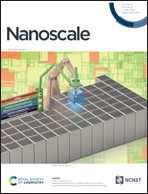Pyrochlore-type cobalt and manganese antimonate electrocatalysts with excellent activity and stability for OER in acidic solution†
Abstract
Developing robust electrocatalysts for the oxygen evolution reaction (OER) in acidic solutions that exhibit both good activity and stability remains a significant challenge. This study focuses on the pyrochlore-type Co2Sb2O7 (CSO) material, which exhibits high electrocatalytic activity in harsh acidic solutions by exposing more Co2+ atoms on the surface. In 0.5 M H2SO4, CSO requires a low overpotential of 288 mV to achieve a current density of 10 mA cm−2, and its high activity can remain for 40 h at a current density of 1 mA cm−2 in acidic solutions. BET measurement and TOF calculation verify that the high activity results from the large number of exposed active sites on the surface, as well as the high activity of each active site. The high stability in acidic solutions is due to the in situ formation of the acid-stable oxide CoSb2O6 on the surface during the OER test. Based on first-principles calculations, the high OER activity arises from the special CoO8 dodecahedra and the intrinsic formation of oxygen and cobalt vacancy complexes, which decrease the charge-transfer energy and improve interfacial electron transfer from the electrolyte to the CSO surface. Our findings provide a promising direction for developing efficient and stable OER electrocatalysts in acidic solutions.



 Please wait while we load your content...
Please wait while we load your content...